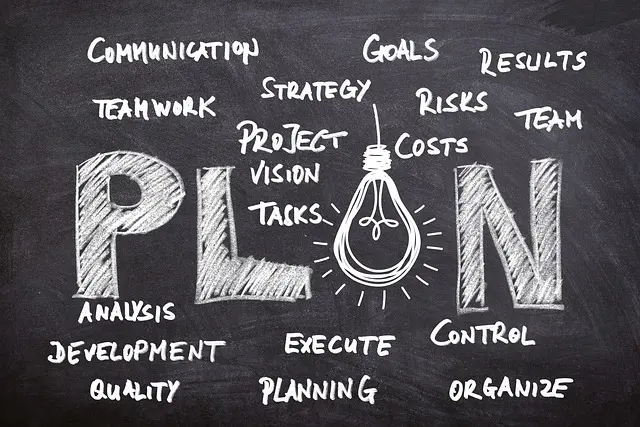
The Global Rise of Female Graduates in STEM Fields
The global landscape of STEM education has witnessed a remarkable surge in the number of female graduates. This positive trend can be attributed to various factors, including increased awareness and advocacy for gender equality in education. In recent years, there has been a significant push to break down barriers that have traditionally hindered women’s participation in STEM fields.
One key factor contributing to the rise of female graduates in STEM is the implementation of targeted initiatives and programs aimed at encouraging girls from an early age to pursue these subjects. Schools and educational institutions have started emphasizing the importance of science, technology, engineering, and mathematics for both boys and girls alike. This proactive approach has helped dismantle stereotypes surrounding gender roles in certain disciplines.
Moreover, governments around the world are recognizing the economic benefits of having more women engaged in STEM fields. They are investing resources into creating supportive environments that foster inclusivity and equal opportunities for all students. By dismantling systemic biases within educational systems, countries are paving the way for a future where female representation in STEM becomes more balanced.
As we continue on this trajectory towards gender parity in STEM education, it is crucial to sustain these efforts by promoting mentorship programs and providing ongoing support networks for aspiring female scientists and engineers. By doing so, we can ensure that this global rise of female graduates in STEM fields becomes a lasting legacy rather than just a passing trend.
Breaking Stereotypes: Women’s Advancement in STEM Education
Breaking Stereotypes: Women’s Advancement in STEM Education
Women’s advancement in STEM education has been steadily breaking stereotypes and challenging the notion that these fields are male-dominated. The increasing number of female graduates in science, technology, engineering, and mathematics is a testament to their determination and perseverance. Despite facing societal barriers and biases, women have shown remarkable progress in pursuing careers traditionally dominated by men.
One key factor contributing to this advancement is the growing recognition of the importance of diversity in STEM fields. Research has consistently shown that diverse teams lead to greater innovation and problem-solving abilities. As a result, educational institutions and industries alike are actively working towards creating more inclusive environments for women in STEM. Initiatives such as mentorship programs, scholarships, and awareness campaigns have played a vital role in encouraging young girls to pursue their interests without feeling limited by gender stereotypes.
Moreover, the achievements of trailblazing women who have excelled in various scientific disciplines serve as powerful role models for aspiring female scientists. Their success stories inspire future generations to believe that they too can make significant contributions to these fields regardless of their gender. By highlighting these accomplishments through media coverage and public recognition, society is slowly shifting its perception about women’s capabilities in STEM.
The journey towards achieving true gender equality within STEM education is far from over. However, with each passing year comes new milestones reached by women across different corners of the globe. As we continue breaking stereotypes surrounding gender roles within science-related professions, it becomes increasingly evident that empowering women in STEM not only benefits individuals but also contributes to overall societal progress.
Pioneering Nations: Leading the Way in Female STEM Graduates
Pioneering nations across the globe have been at the forefront of promoting and encouraging women in STEM fields. These countries have recognized the importance of gender equality in education and have taken significant steps to bridge the gap. By providing equal opportunities, scholarships, and mentorship programs, these nations are empowering more women to pursue careers in science, technology, engineering, and mathematics.
One key factor contributing to their success is a shift in societal attitudes towards gender roles. These pioneering nations have actively challenged stereotypes surrounding women’s capabilities in STEM fields. They have fostered an environment that encourages girls from a young age to explore their interest in science and math. By breaking down barriers and dismantling biases, these countries are paving the way for more female graduates in STEM.
Moreover, these nations understand that diversity drives innovation. They recognize that by including more women in STEM fields, they can harness different perspectives and ideas to solve complex problems. As a result, they are implementing policies that promote gender balance within research institutions and corporate sectors alike. This commitment to diversity not only benefits individual career growth but also contributes significantly to scientific advancements on a global scale.
The efforts made by pioneering nations serve as models for other countries striving for gender equality in STEM education. Their dedication has shown promising results with increasing numbers of female graduates excelling in traditionally male-dominated fields. As we continue on this path towards inclusivity and empowerment, it is crucial for governments worldwide to learn from these examples and implement similar strategies tailored to their own contexts.
A Closer Look at Europe’s Success in Encouraging Women in STEM
Europe has been leading the way in encouraging women to pursue careers in STEM fields. The continent has implemented various initiatives and policies aimed at breaking down gender barriers and promoting equality in education. As a result, there has been a significant increase in the number of female graduates in STEM disciplines across Europe.
One key factor contributing to Europe’s success is its focus on early intervention. Many European countries have introduced programs that target young girls, aiming to spark their interest and curiosity in science, technology, engineering, and mathematics from an early age. These programs provide hands-on experiences, mentorship opportunities, and exposure to successful female role models in STEM fields. By engaging girls at a young age, Europe is laying the foundation for long-term success by cultivating their passion for these subjects.
Additionally, Europe’s commitment to inclusive educational policies plays a crucial role in encouraging women to pursue STEM education. Several countries have implemented measures such as affirmative action policies or quotas that ensure equal representation of women within universities and research institutions. This proactive approach helps create an environment where women feel supported and empowered throughout their academic journey. Furthermore, many European universities offer scholarships specifically designed for female students pursuing STEM degrees as another means of removing financial barriers.
The efforts made by European nations are paying off significantly when it comes to increasing the number of female graduates in STEM fields. However, this progress should not lead to complacency; continuous support must be provided throughout every stage of a woman’s career path – from education to employment – ensuring that she can thrive professionally without facing gender-based obstacles or biases.
The Rising Powerhouse: Asia’s Contribution to Female STEM Graduates
Asia has emerged as a powerhouse in producing female graduates in STEM fields. With countries like China, Japan, and South Korea leading the way, there has been a significant increase in women pursuing science, technology, engineering, and mathematics disciplines. This shift can be attributed to various factors such as government initiatives, changing societal attitudes towards gender roles, and increased access to education.
One key factor contributing to Asia’s success in encouraging female STEM graduates is the emphasis placed on education by governments in the region. Countries like China have implemented policies that prioritize STEM education for both boys and girls from an early age. Scholarships and financial incentives are also provided to encourage more girls to pursue these fields. As a result of these efforts, there has been a notable rise in the number of women enrolling in STEM programs across Asia.
Another significant factor is the changing societal attitudes towards gender roles in Asian countries. Traditionally male-dominated industries are now opening up opportunities for women to excel. There is greater recognition of the value that diversity brings to innovation and problem-solving within STEM fields. As more successful female role models emerge from Asia’s scientific community, young girls are inspired to follow their passion for science or technology.
Moreover, improved access to quality education has played a crucial role in empowering Asian women interested in STEM fields. Many countries have invested heavily in educational infrastructure and resources necessary for teaching science and technology subjects effectively. Additionally, online learning platforms have made it easier for aspiring female scientists or engineers residing even remotely located areas within Asia to access high-quality educational content.
The increasing contribution of Asian nations towards promoting gender equality within STEM fields showcases their dedication towards creating inclusive societies where talent thrives regardless of gender stereotypes or biases.
North America’s Efforts in Promoting Gender Equality in STEM Education
North America has made significant strides in promoting gender equality in STEM education. Efforts to encourage women’s participation in these fields have been evident through various initiatives and programs. For instance, universities across the region have implemented mentorship programs that pair female students with successful women working in STEM industries. This not only provides guidance and support but also helps break down barriers by showcasing real-life examples of successful women in these fields.
Additionally, North American governments have taken steps to address the gender gap in STEM education. They have introduced policies that promote equal opportunities for both genders, such as scholarships specifically targeting female students pursuing STEM degrees. By providing financial support and recognition, these initiatives aim to empower more women to pursue careers in traditionally male-dominated fields.
Furthermore, organizations and advocacy groups play a crucial role in advancing gender equality in North America’s STEM education landscape. These groups work tirelessly to raise awareness about the importance of diversity and inclusivity within scientific disciplines. Through workshops, conferences, and networking events, they create platforms for dialogue where challenges faced by women can be openly discussed while fostering an environment conducive to their success.
North America’s efforts demonstrate a commitment towards achieving gender equality within STEM education. By implementing mentorship programs, introducing supportive policies, and fostering collaboration through advocacy groups, the region is actively working towards breaking down barriers that hinder women from fully participating and excelling in these fields.
South American Nations Making Strides in Female STEM Graduates
South American nations have been making significant progress in promoting gender equality and empowering women in STEM fields. These countries recognize the importance of diversity and are actively working towards breaking down barriers that have traditionally hindered women’s participation in these fields.
One key factor contributing to South America’s success is the implementation of inclusive educational policies. Governments across the region are investing heavily in initiatives aimed at encouraging young girls to pursue STEM education from an early age. Scholarships, mentorship programs, and specialized training courses are just some of the strategies being employed to support female students throughout their academic journey.
Moreover, South American nations are also fostering collaboration between academia, industry, and government entities to create more opportunities for women in STEM careers. By establishing partnerships with leading companies and research institutions, these countries are providing access to internships, job placements, and networking events specifically tailored for female graduates. This holistic approach not only helps address gender imbalances but also ensures a sustainable pipeline of talented women entering STEM industries.
The efforts made by South American nations demonstrate their commitment to promoting gender equality in STEM education. Through targeted initiatives and collaborative partnerships, they continue to empower future generations of female scientists, engineers, mathematicians, and technologists who will undoubtedly contribute significantly to innovation and development within their respective countries.
African Countries Laying Foundations for Women’s Empowerment in STEM
African countries have been making significant strides in laying foundations for women’s empowerment in STEM fields. Governments and educational institutions across the continent are recognizing the importance of gender equality in these industries and are taking measures to encourage more women to pursue careers in science, technology, engineering, and mathematics.
One key initiative is the establishment of scholarships and grants specifically targeted at female students interested in STEM subjects. These financial aids aim to reduce barriers that may hinder girls from pursuing higher education in these fields due to economic constraints. By providing support and resources, African countries are creating opportunities for young women to excel academically and professionally in STEM.
In addition to financial support, mentorship programs play a crucial role in empowering women in STEM. Many African universities have introduced mentoring initiatives where successful female professionals serve as mentors for aspiring female students. These programs not only provide guidance but also inspire young women by showcasing real-life examples of successful women who have overcome challenges within their respective STEM fields.
These efforts demonstrate Africa’s commitment towards bridging the gender gap in STEM education. By investing resources into scholarships, grants, and mentorship programs tailored towards empowering women, African countries are paving the way for a future where more females can thrive and contribute significantly to scientific advancements on the continent.
Oceania’s Commitment to Gender Equality in STEM Education
Oceania has emerged as a leading region in promoting gender equality in STEM education. With a strong commitment to empowering women, Oceania’s efforts have yielded significant results in bridging the gender gap within these fields. Initiatives such as mentorship programs, scholarships, and awareness campaigns have played a crucial role in encouraging more female students to pursue careers in STEM.
One key aspect of Oceania’s commitment to gender equality is the emphasis on early education. By introducing STEM subjects at an early age and providing equal opportunities for both boys and girls, Oceania aims to break down societal stereotypes surrounding gender roles. This approach not only encourages young girls to explore their interests but also fosters an inclusive learning environment that promotes diversity and innovation.
Furthermore, Oceania recognizes the importance of representation in inspiring future generations of female STEM professionals. The region actively supports initiatives that highlight successful women working in various STEM fields through conferences, workshops, and networking events. By showcasing these role models who have excelled despite facing challenges along the way, Oceania inspires young girls to believe in their own potential and strive for excellence.
Through its unwavering commitment to fostering gender equality in STEM education, Oceania continues to pave the way for increased participation of women within these fields. By addressing societal barriers and providing equal opportunities from an early age, this region ensures that talented individuals can thrive regardless of their gender. With ongoing efforts focused on empowerment and inclusivity, Oceania sets a shining example for other regions seeking progress towards closing the gender gap within STEM disciplines.
Challenging the Gender Gap: Middle Eastern Countries Encouraging Women in STEM
Middle Eastern countries have been making notable strides in encouraging women to pursue careers in STEM fields. These nations recognize the importance of gender equality and are actively working towards closing the gender gap in these industries. By providing equal opportunities, promoting education, and challenging societal norms, they are empowering women to excel in STEM.
One key initiative that Middle Eastern countries have implemented is ensuring equal access to education for both genders. Governments have invested heavily in educational infrastructure, creating schools and universities that offer quality STEM programs for girls. Scholarships and financial aid programs specifically targeting female students have also been established to support their academic pursuits.
In addition to educational reforms, Middle Eastern countries are actively challenging societal stereotypes surrounding women’s roles in society. They promote positive role models who exemplify successful careers in STEM fields, inspiring young girls to envision themselves pursuing similar paths. Furthermore, awareness campaigns highlighting the achievements of women scientists and engineers serve as a powerful tool for breaking down barriers and changing perceptions about gender roles.
These efforts demonstrate the commitment of Middle Eastern nations towards achieving greater gender equality within the realm of STEM education. By investing resources into education and challenging traditional norms, these countries are paving the way for more women to enter scientific disciplines traditionally dominated by men. As a result, we can expect continued progress towards narrowing the gender gap in STEM fields across this region.












